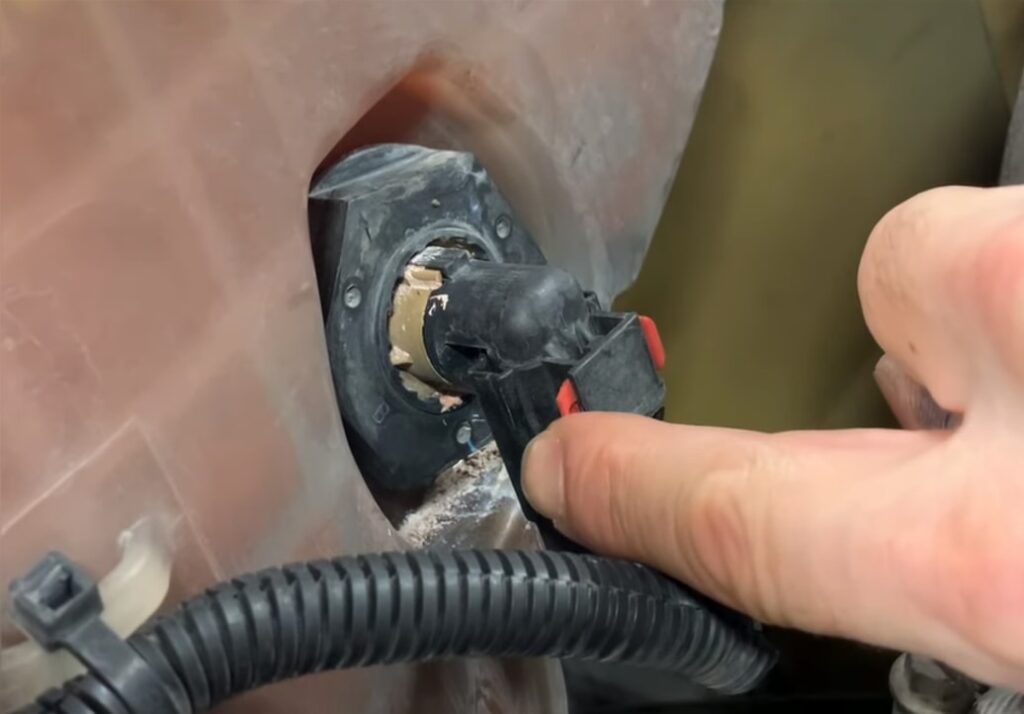We have heard of several people complaining about Peterbilt coolant level sensor problems.
Your coolant level sensor is an electronic sensor that measures your engine’s coolant level. This is found in your radiator or coolant reservoir, which makes sure that the coolant level in the system is at the recommended level.
When the amount goes lower than the safe level, then you will see that the low coolant light turns on. This is designed to notify you of the need to top up on your coolant. Having a very low coolant level is not safe for your engine since this is what prevents overheating in the engine. Thus, you need to make sure that not only do you have the right amount of coolant level but that the coolant level sensor is working well.
With all these things in mind, let us talk about some of the common Peterbilt coolant level sensor problems – symptoms to watch out for and fixes you can do about these.

Contents
Typical Peterbilt Coolant Level Sensor Problems
Do you notice any of these symptoms below? If so, then it may be time to have your coolant level sensor replaced or checked by a specialist to make sure it is working as it should.
1. Low coolant
If your coolant level sensor is problematic, then you may notice that your coolant level is low. When the light does not turn on and the level is lower than normal, then you may be having some issues with either the wiring or the sensor.
Your sensor typically detects a low coolant level. This is why if there is a drop in the coolant level in your reservoir, while the light stays off, it may be time to have the wiring inspected or the sensor checked for possible damage.
2. Coolant light remains on
Another key symptom of a malfunction in your coolant level sensor is when the coolant level light switches on. If your sensor begins to have a short, then the coolant level light may turn on. This can be an issue since when the light stays on permanently, you will not get a proper alert when the coolant level does plummet.
3. Overheated engine
It is important to take note of the engine’s optimal temperature when determining if you are having a coolant level sensor issue. An engine that overheats can be linked with various causes that may not even be related to the sensors. Yet, if the overheating is due to a very low coolant level, it means you need to have your sensor checked and fixed.
What you can do is to observe a couple of things – check if the coolant level is low and if the engine overheats. Then, if the coolant light does not turn on prior to the overheating, it is possible that your sensor is acting up.
It is important to understand that although your coolant level sensor does not serve a major role in the drivability or performance of your engine, it serves a specific function in protecting your engine. It prevents the engine from having a very low coolant level that can then cause it to overheat.
With all that being said, you should have a technician look into your vehicle when you suspect a problem with the coolant level sensor.
While the coolant level sensor doesn’t play a big role in engine performance or drivability, it does serve a very specific purpose in protecting the engine from dropping low in coolant and potentially overheating. For this reason, if you suspect that your coolant level sensor may be having an issue, it is best to consult a technician to check your vehicle and identify any problem with it.
Additional Facts About Coolant Level Sensor Problems
Your vehicle’s coolant level sensor is essential in maintaining the engine’s optimal performance. It helps to maintain your ECM’s coolant temperature, so your engine does not overheat and cause further problems with your vehicle.
In addition to the different items mentioned above that are common symptoms of Peterbilt coolant level sensor problems, there are a few things to keep in mind when you suspect an issue with this key component in your truck.
For instance, poor mileage can arise when you have a faulty sensor, especially when it is sending out incorrect information to your truck’s system. Hence, the air-fuel mixture is incorrect, which causes the fuel economy to drop and the engine performance may be reduced, as well.
You should also pay close attention to the exhaust pipe. Do you notice black smoke coming out of your exhaust pipe? If so, then it is best to have a technician take a look at it to be sure there are no complications with it.
When you have an inconsistency in the engine temperature, your ECU may end up adding fuel mixture, which can make combustion quite difficult. With more than enough burning of the fuel, this can result in a thick black exhaust coming out of the pipe.
Read More: What are common Peterbilt 579 Automatic Transmission Problems?
Conclusion
Peterbilt coolant level sensor problems can be concerning for many because of potential other effects to your vehicle. However, by paying close attention to these symptoms and addressing them all sooner than later, you can prevent further issues with the engine and get these problems sorted out before things get worse.